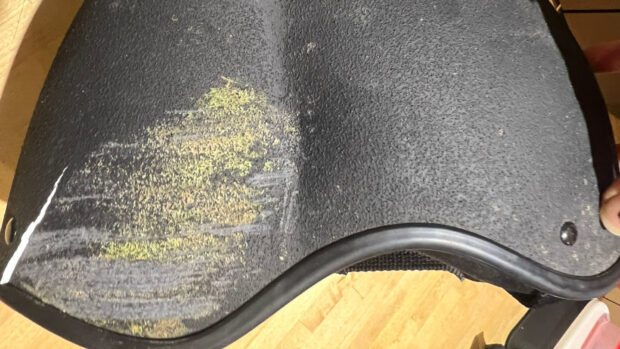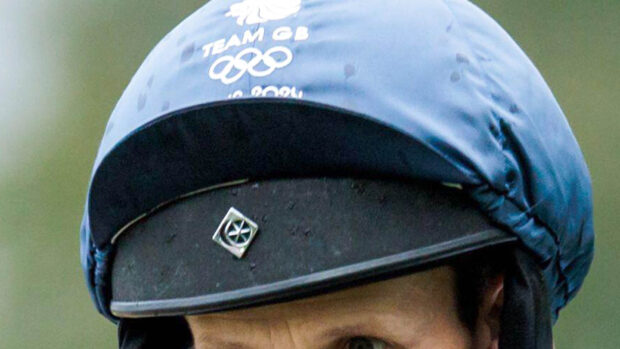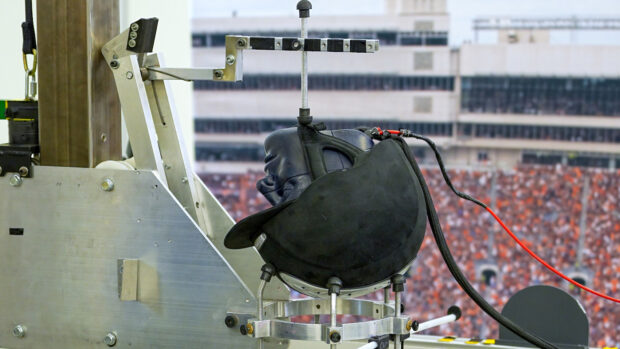With manufacturers and retailers offering great discounts on riding hats for International Helmet Awareness Day today (Saturday, 1 August), there has never been a better time to replace your riding hat. So what should you be looking for in terms of fit, size and safety standards? Find out all you need to know right here…
How do I measure myself for a riding hat?
Measure the circumference round your head above your eyebrows with a fabric tape measure, taking care to keep it straight and steady, then check your measurements against an online size chart such as this one: www.davidmorgan.com
However, most helmet manufacturers recommend you visit a qualified BETA (British Equestrian Trade Association) fitter instead of measuring yourself. Which brings us onto our next question…
Is buying a riding hat online a good idea?
“Champion recommends that riders have a new hat fitted before purchase, which is obviously a problem for online purchases,” says Sarah-Jane Febard, managing director of Champion Manufacturing.
“Champion only supports online purchases where the rider is simply replacing an old hat (that was correctly fitted) with a like-for-like purchase, but even then we would recommend that riders are fitted each time they purchase a new hat, to make absolutely certain they purchase the correct size for them.
“Getting the correct size of hat for your head is crucial to ensure it provides maximum protection and comfort. We would encourage all riders to have their hats professionally fitted. Spending a little extra to ensure you have exactly the right hat and fit for you is a worthwhile investment.”
Roy Burek, managing director of Charles Owen, adds: “Always buy from a shop that uses staff trained to the BETA standards and can fit your helmet properly. It’s no use buying a helmet from someone who knows as much about hats as you do!”
What are current hat safety standards?
At the moment, the minimum safety standard for riding hats is EN 1384. Hats that conform to this standard have passed all the required tests, and it’s a legal requirement in Britain for under-14s to wear a hat conforming to at least EN 1384 when riding on the road.
However, the EN 1384 standard (you may also see it as BSEN 1384, which simply means the hat has been tested in Britain) has been withdrawn by the European Union, so while these hats remain safe to use for general riding, they can no longer be Kitemarked by manufacturers. A new European standard to replace EN 1384 is in the pipeline and is expected to be finalised in 2016.
Continued below…

Save money on a new riding hat on International Helmet Awareness Day
International Helmet Awareness Day 2015 will take place on Saturday 1 August

Major hat rule change: what you need to know
If I compete, do I need a different standard hat?
Every discipline has its own rules so you need to check your rulebook to ensure your new hat will comply with the required safety standards. Most disciplines now have their 2016 rules available and most will not allow hats that only comply to ENB 1384 in 2016. Get the latest info.
If you’re competing in a higher risk discipline, Clare Williams, executive director of BETA, suggests that you might like to look at a helmet that’s passed a lateral rigidity test, such as PAS015: 2011 and Snell. If you fall and something lands on top of you (such as your horse), then hats conforming to this test give lateral rigidity to your head, offering more protection.
Roy agrees that the Snell standard is a good choice for cross-country riding, and adds: “The PAS standard is given to hats that provide the best absorption of an impact.”
How can I tell if my riding hat fits?
“A hat that is a good fit should fit comfortably with no uncomfortable tightness,” says Sarah-Jane. “At the same time, there should be no movement and the hat should result in a vacuum fit across the front. This can be checked by gently rocking the skull/hat, which should move your eyebrows. A well fitting hat should not tip forward onto your eyes when tapped from the back.”
Hat manufacturers are acutely aware that heads are not a uniform shape or size so design different models to cater for that variety, ensuring every rider can find a hat that is suitable for them.
“The correctly fitted helmet is the helmet that fits you,” says Roy. “Charles Owen recognises that different head shapes and sizes need different hats, so we offer oval and round fits.”
Riding hat safety tips
♦ Always, always change your hat after it’s sustained an impact in a fall, even if this is a fall from the tackroom shelf.
♦ Riding hats should be replaced every two to three years as the protective materials they contain will gradually deteriorate with exposure to heat and repeated use.
♦ Your riding hat should be stored in a cool environment and not be exposed to direct heat and light sources. A car or car boot isn’t a good storage place as they can get surprisingly hot!
♦ Keeping your hat in a protective hat bag is an ideal way to help ensure the right conditions while stored as it will keep it cushioned and away from strong sunlight.
International Helmet Awareness Day is taking place today (Saturday 1 August). Find your local riding hat stockist that is taking part at www.riders4helmets.com




